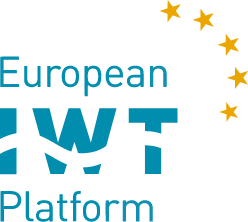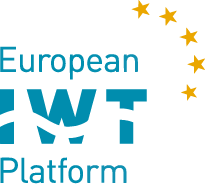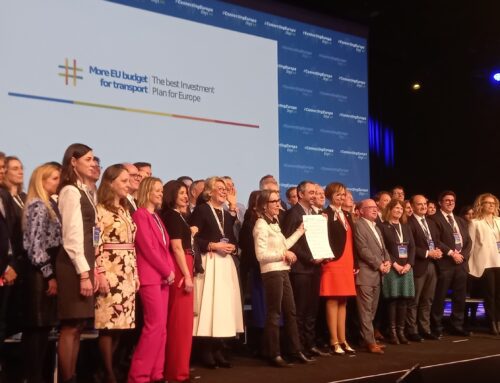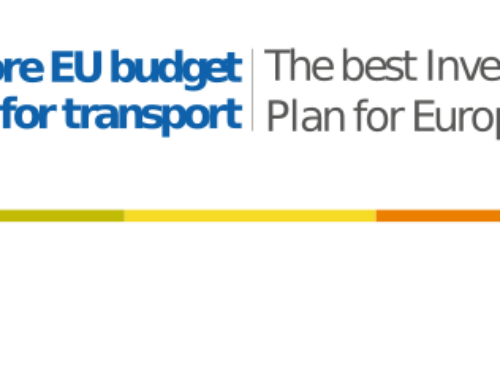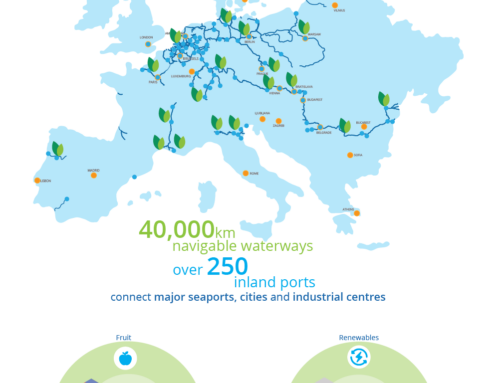Earlier in February 2022, the CCNR organised a full-day workshop on “Shore power at berths”. Leny van Toorenburg, our Secretary of the Nautical/Technical and Infrastructure Committees, has outlined the experience with shore power on behalf of the industry, IWT Platform’s parent organisations – EBU and ESO.
You can view the full presentation in English (click HERE!) and in Dutch (click HERE!).
A SUMMARY
We have to go back to the 70s, when the inland shipping industry was already using shore power when they moored their ships for repairs at a shipyard. Naturally, these were not boxes as we know them today and not with the purpose that we have today, but it was still a service from the shipyards to its customers: the inland shipping. At that time, there was no questions regarding shore power from a point of view of the environment, noise or nuisance from emissions. The main issue was that inland navigation could not – or at least could not for a certain period of time – use their aggregate on board where their power needs would be met under other circumstances. Why do we say that? It marks the period in which inland shipping was already using shore power. In fact, it was a leader in this field.
Around 2008, shore power – as we know it today – was introduced, with Rotterdam being a leader. Initially, it was a free facility. More problematic issues emerged only after 1 March 2010, when it became mandatory and had to be paid for. The problems that arose have varied and included e.g. not being able to connect as there was not enough power; fault issues with the amperage available to connect; or cabinets knocking out because of the ground fault circuit breaker.
Generally speaking, the most common problems that still occur today can be divided into:
- Uniformity in connection,
- Outdated equipment: ship/shore power boxes, and the synchronizations within them,
- Ground fault circuit breaker, especially with boxes that cannot be reset from the outside,
- Connection problems via the app, often these problems can be solved with one phone call, however then the helpdesk would need to be available 24/7.
What are we looking for?
Sufficient connection points
Sufficient connection points must be available in any case. The inland waterway operator uses 16, 32 or 63 amps, however in practice 16 ampere is hardly ever being used. It is recommend then to equip the boxes with connections for both 32 and 63 amperes. The larger ships often make exclusive use of the 63 ampere connection, because they have a lot of power-demanding equipment on board, for which 32 ampere is not or hardly sufficient. On the other hand, 32 amps can still be used for adequate those vessels, especially if we take into consideration the weight of cables.
As for the passenger ships though, these usually use 2 or even 3 power packs of 400 amps!
A cable weights on average 1 kg per 1 meter. A cable for connection requires at least a length of 25 meters, but more often a cable of 50 meters or more will be needed to reach the connection point. Connecting is therefore still a heavy and labour-intensive work. This is caused by a specific laying out of the cables, which are very heavy indeed and need to be carefully laid out to the connection point. Also, it can get more complicated when the weather conditions get worse and it is slippery on-board due to snowfall, frost etc.
Cables
Nowadays, besides the standard copper cables, there are also aluminium ones available that are obviously much lighter in weight. At the same time, aluminium cables are more fragile. An inquiry with the supplier has shown that these cables cost app. 400 euros (including plugs) for a 25 meters’ cable length. In the light of what is needed on-board, a purchase of these cables means on average an investment between 800 to 1.200 euros. After all, in many cases 25 meters of a cable is insufficient, and 50 or 75 meters is required.
The Dutch Ministry of Social Affairs and Employment does not stipulate a legal lifting weight for the employees and there is no legal provision for that, however it is generally assumed that 23 kilograms is the maximum. Taking into consideration such weight of the cables and any other circumstances happening on-board, starting with a bad weather conditions, snowfall, ice on deck etc., the industry still needs further improvements.
Uniform connections
A uniform connection should be used where a five-pole CEE plug is common. The connection on the shore side should be easily accessible and safe.
Costs
Costs of connection should not be a barrier since we must do it! Connecting makes the inland navigation even more environmentally friendly, it does reduce emissions, P10 and CO2, and prevents noise pollution. The costs on average are 0.27 cents per kilowatt hour. On-board, these costs are often perceived as high. Also, people on-board do not always know what the exact cost of electricity is when it is generated with their own generators. It might sound strange, but in the end such cost is also strongly influenced by a fuel price, and can therefore fluctuate.
Simple and accessible payments
Payment should be made simple and accessible to everyone, for example through an application or credit card. But above all, it must be uniform as much as possible! After all, all European inland navigation vessels will be using it.
Helpdesk
There must be an easily accessible Helpdesk that is also available later into the night and at the weekends. Such Helpdesk should be able to provide the first aid and if the problem is not remotely solvable, a mechanic should be arriving on-site within a reasonable timeframe. That would naturally depend on the location and a number of power boxes present, obligation to connect, etc. In any case, it shouldn’t be the case that a ship cannot find a suitable berth due to a connection problem.
A short glimpse on the INVENTORY
To put things into the right perspective, a small and by no means complete (!) inventory of the number of cabinets etc. was run. Many power boxes are managed by Connect4Shore, the company formerly known as Parkline Aqua. They now manage and service around 2100 connections in more than 55 municipalities in the Netherlands and Belgium, including Amsterdam, Antwerp, Rotterdam, the Drechtsteden, Zaanstad, Nieuwegein and Harlingen. They do this by order of the Rijkswaterstaat, the Flemish Waterway, North Sea Port and the Province of South Holland, among others. In the meantime, drinking water and waste facilities have been added to some 400 assets. Another frequently used party is, of course, the Stichting Avalstoffen Binnenvaart. They too have a considerable number of boxes. At Walstroom.eu that has connections in Belgium, the Netherlands, France and Germany, we are talking about approximately 1200 connections in about 35 municipalities at home and abroad.
There is an initiative in France that is worth pointing out. Along the Seine, a pilot project with 13 cabinets with connections for 63 amperes has been installed at a number of moorings for cargo ships. It has recently been decided to roll out the project further and 70 new cabinets will be installed. This is still a fairly limited project, but should be observed! Whether this project takes place in cooperation with connet4shore or walstroom.eu, we personally do not know (yet).
Why is shore power a must?
Shore power should become much more of a common good in inland shipping than it is already, since the sector must become greener and cleaner. Shore power is of course only a limited part of the entire greening process, but it can certainly contribute in terms of the emission standards and reducing CO2. It is, therefore, important that a shore-based power is being promoted by the governments, and that the facilities are being built according to the latest standards and requirements. This will both prevent problems of experiencing high financial costs for their refurbishment in a long run, and – as mentioned above – contribute to the reduction of emissions that the inland shipping must cut by 10% compared to 2015. Shore power is also important for the preservation of moorings in urban areas. Increasingly, we see more and more berths disappearing in urban areas, due to complaints raised by the local residents, e.g. about the noise pollution or stench. One way to stall this process could be to use shore power.
This presentation did not – and deliberately so – address the electrification of inland navigation. Electric boating is currently under the development, and we must keep a close eye on it. For example, there is a mobile shore power installation for seagoing shipping that the Port of Rotterdam Authority has been testing. Since 1 February, they continue with a pilot project for inland shipping. It takes place at the Maaskade on the Noordereiland in Rotterdam, and will run for 3 months. You can view more details in a video (in Dutch only) – click HERE! This film is also a recognition of the needs for shore power in urban areas and the preservation of moorings. Enjoy!
Leny van Toorenburg
Secretary of the Nautical/Technical; and Infrastructure Committees
